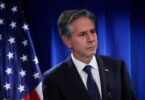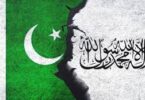Minister for Interior and Planning Ahsan Iqbal, while presiding over a meeting of Annual Plan Coordination Committee (APCC) expressed optimism about the turned around of the economy in the next fiscal year. He said that current account deficit will be brought down to $12 billion by reversing the double digit trend in imports. He said that economic growth prospects of 6.2 -8 percent are positive on account of expected performance of agriculture, steady growth in industrial sector and improved energy supply.
The balance of payment framework approved by APCC appears to be overoptimistic as it has been built on the belief of reversal of going trend of exports and imports which is mainly caused by the irrational concessions given to China in Free Trade Agreement and the ones allowed to Indonesia and Turkey in the Preferential Trade Agreements made with them. No industrial and agricultural base has been built over the last five years for imports substitution of consumers’ goods, raw material and intermediate good for exports manufacturing. With China alone trade deficit is $13 billion and with Indonesia it is 1.6 billion. Exports to Iran can not be increased because of bottlenecks in banking channels and small quantum of bilateral trade is confined to cash payment and barter trade. There has been decline of $ 2 billion in exports to Afghanistan and the market that used to be available to Pakistan has been captured by Indian and Chinese exporters with cheaper goods.
In the nine months of outgoing fiscal, exports grew at a pace of 13.1 percent and imports soared by 15.7 percent. This resulted in a trade deficit of 27.3 billion dollars which is 17.3 percent higher than the previous year. It this trend continues the trade gap may go up further. Currency depreciation allowed by the State Bank of Pakistan has not reflected in substantial growth in exports which may reach to $24 billion at the closing of the current year as the nine months receipts stood at $ 17.1 billion. How an export increase of $ 7 billion can be achieved in the last quarter is a million dollar question? Similarly imports have been estimated at $ 53.1 billion for the full year whereas in nine months the import bill has jumped to $ 44 billion. If the current trend continues the value of imports may be well over $ 60 billion. The trade deficit at $26 billion for the full year will be difficult to maintain.
The government has set the current account deficit target at 3.8percent of the GDP which is significantly lower than the latest projections of International Monetary Fund (IMF), World Bank and Asian Development Bank. These international financial institutions have forecast that the next fiscal year current account deficit will stand at 4.5 percent of GDP. The fallacy of governments’ estimates about the external balance is based on assumptions and guess work for working out these estimates. Although it has taken into account the positive impact of CPEC on exports yet it has not fully counted it in imports and current account deficit. Speaking at a seminar, Advisor to the Prime Minister on Finance, Miftah Ismail admitted that current account deficit remained a problem, but we have largely controlled it due to the measures taken by the government including depreciation of rupee.
The government expects a weaker rupee to help the country’s flagging exports in addition to tackling the growing current account deficit. But the exporters do not seem impressed by second devaluation in less than four months that saw the rupee fall by around nine percent since December. Currency devaluation does not offer long term sustainability; rather it increases the cost of doing business by pushing up prices of energy inputs and raw material. It is not the answer to declining exports. It has a very brief impact on exports. The government must fix fundamentals to boost exports as adhoc day to day transactions will not help. Energy shortage coupled with high gas and power tariffs has turned the textile industry to junk during the last 10 years. There is a lot of consumption of intermediate goods in our exports which means that our exports are imports dependent. The imports would become expensive and they start to nullify the positive impact on exports.
The Planning Minister has claimed that energy crisis is over, ignoring the four to six hours load shedding that has been started in cities from March. The industrial hub of the country Karachi has plunged deep into darkness because of the tug o war between Sui Southern and Karachi Electric Supply Company. Sindh Chief Minister, Syed Murad Ali Shah has written three letters to the Prime Minister Shahid Kaqan Abbasi agitating the issue of power outages. The growth in the agriculture sector is stagnant at 2 percent. The future economic scenario is not that much rosy which the government projects. It can be summed up in the saying of the founder of classical school of thoughts of economics, Adam Smith. “If wishes were horses beggars might have taken all time ride on them.






